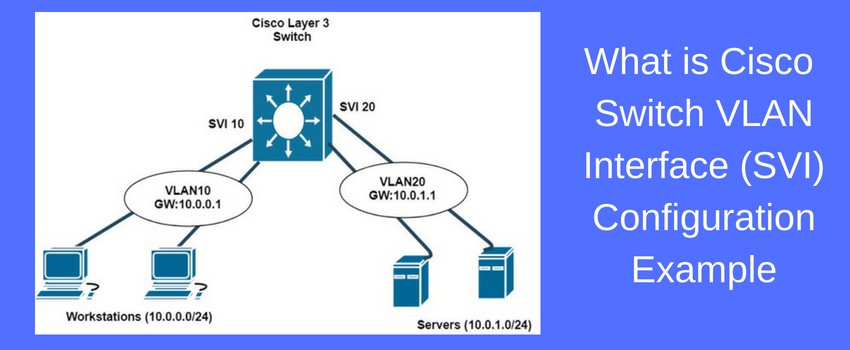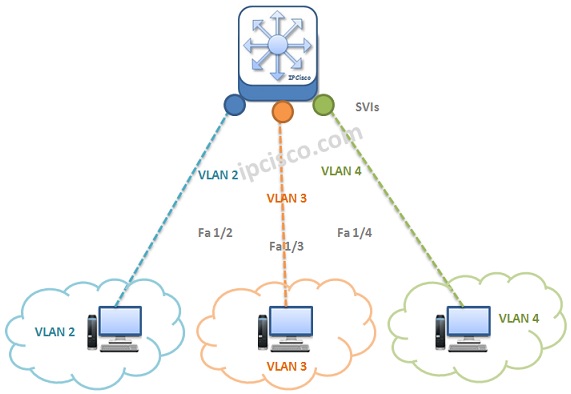As technology continues to advance, networking has become an essential aspect of daily life. We are constantly connected to the internet, and with the rise of remote work, it has become more important than ever to have reliable and efficient networking systems. One component of these systems is the switch virtual interface, or SVI. But what exactly is an SVI, and why is it important in modern networking?
In a nutshell, an SVI is a logical interface that allows a switch to communicate with other devices using the Internet Protocol (IP). It acts as a virtual router, allowing traffic to be routed between different VLANs (Virtual Local Area Networks) on the same switch or across multiple switches. This means that instead of having to rely on physical routers, which can be expensive and difficult to manage, an SVI can provide a cost-effective and efficient solution for connecting devices within a network. In this article, we will explore the ins and outs of SVIs, their benefits, and how they can be configured to optimize network performance.

What is a Switch Virtual Interface?
A switch virtual interface (SVI) is a virtual Layer 3 interface that is used to route traffic between different VLANs. It is a logical interface that is configured on a switch, and it can be used to connect multiple VLANs to one another. The SVI is a virtual interface that does not physically exist in the switch, but is instead created using the switch’s software. It can be used to route traffic between different VLANs, and also to provide a default gateway for each VLAN.
What is a VLAN?
A VLAN (Virtual Local Area Network) is a logical group of network devices that are grouped together on a single LAN. VLANs are used to segment traffic on a network and create a boundary between different networks. This allows for better security and improved performance, as the traffic on a VLAN is isolated from the rest of the network. VLANs can be created on any Layer 3 device, such as a router or a switch.
VLANs are typically used in networks where different departments or groups of users need to be isolated from each other for security or performance reasons. For example, a healthcare facility might use VLANs to separate the medical staff from the administrative staff. This ensures that the sensitive medical information is kept separate from the administrative data.
How Does a Switch Virtual Interface Work?
A switch virtual interface (SVI) is a logical interface that is configured on a switch. It is used to route traffic between different VLANs, and also to provide a default gateway for each VLAN. The SVI can be used to connect multiple VLANs together, and it is configured using the switch’s software.
When a packet is sent to an SVI, the switch will examine the packet’s destination address and determine which VLAN it should be sent to. The switch will then forward the packet to the appropriate VLAN. The SVI can also be used to provide a default gateway for each VLAN, which allows users on that VLAN to access the Internet or other networks.
Benefits of Using a Switch Virtual Interface
Using a switch virtual interface provides several benefits, including improved security and performance. By isolating traffic on different VLANs, it is possible to prevent malicious traffic from accessing sensitive data on the network. Additionally, isolating traffic on different VLANs can improve performance, as the traffic on each VLAN will not be competing with the traffic on other VLANs.
Using an SVI also simplifies network management, as it eliminates the need to configure multiple physical interfaces on the switch for each VLAN. Instead, all of the VLANs can be connected to the switch using a single logical interface. This helps to reduce complexity and makes it easier to manage the network.
Frequently Asked Questions
A switch virtual interface (SVI) is a Layer 3 network interface configured on a switch. It allows the switch to communicate with different networks, providing access to other parts of the network.
What is a Switch Virtual Interface?
A switch virtual interface (SVI) is a Layer 3 network interface configured on a switch. It allows the switch to communicate with different networks, providing access to other parts of the network. The SVI is a virtual interface that is configured on the switch, and it is made up of one or more physical interfaces. It is used to provide access to other parts of the network.
The SVI can be used to configure a virtual LAN (VLAN) or a routed interface. When a VLAN is configured on the SVI, it will allow the switch to communicate with other devices in the VLAN. When a routed interface is configured, it will allow the switch to forward packets between networks.
What are the Benefits of Using an SVI?
An SVI provides a number of benefits. First, it allows the switch to communicate with other parts of the network. This can be used to provide access for remote users or to connect to other networks. Second, it allows for the configuration of a VLAN or a routed interface. This can help to improve security and control access to the network. Finally, it provides a single point of configuration, making it easier to manage the network.
An SVI also provides a number of performance benefits. By using an SVI, the switch can forward packets more quickly and efficiently. This can help to reduce latency and improve throughput. In addition, the SVI can be used to control the flow of traffic and to provide Quality of Service (QoS) for certain types of traffic.
How Do I Configure an SVI?
Configuring an SVI is simple. First, you will need to create a VLAN or a routed interface on the switch. Once the VLAN or routed interface is created, you can then configure the SVI. This is done by assigning an IP address to the SVI, setting the subnet mask, and configuring any other necessary settings. Once the SVI is configured, you can then assign it to the VLAN or routed interface.
Once the SVI is assigned to the VLAN or routed interface, it is ready to be used. The SVI can then be used to provide access to other parts of the network, or to configure Quality of Service (QoS) for certain types of traffic.
What are the Limitations of an SVI?
An SVI has a number of limitations. First, it can only be used to communicate with other devices in the same VLAN or routed interface. This means that if you need to communicate with another part of the network, you will need to configure a separate VLAN or routed interface. Second, the SVI can only be used to forward packets that are destined for the same VLAN or routed interface. Finally, the SVI can be used to configure Quality of Service (QoS) for certain types of traffic, but it cannot be used to configure QoS for all traffic.
In addition, an SVI can only be used to forward packets between networks if the networks are in the same VLAN or routed interface. This means that if you need to forward packets between two different networks, you will need to configure a separate routed interface on the switch.
What are the Security Implications of Using an SVI?
Using an SVI can have security implications. First, the SVI can be used to provide access to other parts of the network, and this can be used by malicious users to gain access to sensitive data. Second, the SVI can be used to configure Quality of Service (QoS) for certain types of traffic, and this can be used to prioritize certain types of traffic over others. Finally, the SVI can be used to forward packets between networks, and this can be used to bypass security controls that are in place.
To reduce the security implications of using an SVI, it is important to implement security controls. This can include using authentication and encryption to secure communications, and using access control lists to limit access to sensitive data. In addition, it is important to regularly monitor the SVI to ensure that it is not being used to bypass security controls or access sensitive data.

video demonstration on how to configure a switch virtual interface
In conclusion, a switch virtual interface (SVI) is a vital component in modern computer networks. It enables efficient communication between different devices in a network while also facilitating the management of the network. SVIs are used to configure network settings, such as IP addresses and VLAN membership, making it easier for network administrators to monitor and troubleshoot network issues. With the rapid growth of technology, SVIs have become an essential tool for managing complex networks, and their importance cannot be overstated.
In summary, understanding the concept of a switch virtual interface is crucial for anyone interested in computer networks. It plays a significant role in ensuring that data is transmitted efficiently and securely between different devices in a network. As technology continues to evolve, the need for advanced networking solutions will only increase. Therefore, it is essential to stay up-to-date with the latest developments in network infrastructure and continue to learn about the different tools and techniques used in managing modern networks.



